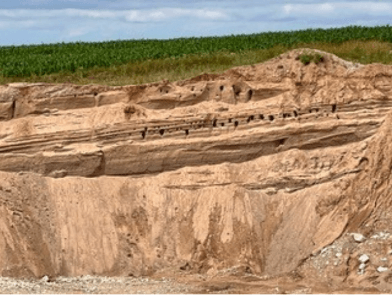By Nikki May
Early July is a good time to find birds in the various breeding periods of their lifecycle. Males are still singing their characteristic mating songs, females and sometime males are brooding a second clutch of
eggs, parents are feeding their young, and other young birds are just learning to fly.
On an early Sunday morning, nine members of Saugeen Nature ventured into the landscape of south-
ern Grey and Bruce to count how many breeding birds they could find. The data is then entered into acentral data base where it is compiled with other birders’ efforts to create a Breeding Bird Atlas for Ontario. This current period, from 2021 to 2025 is the third such atlas for Ontario. The first was completed from 1981 to 1985 and the second from 2001 to 2005. The data is provided by volunteer birders all over the province and is used by scientists, government officials and conservation professionals to guide their conservation efforts.
The Saugeen Nature group drove up and down concession roads surrounded by forests, swamps,
marshes, meadows and agricultural fields. We stopped at a variety of habitats where we watched and
listened to identify as many different breeding species as we could. The Grey-Bruce countryside is found to be amazingly diverse when it is explored in this way. The naturalists enjoyed this detailed tour of the landscape as a bonus. Finding birds that are courting, nesting, and raising young is very rewarding, much more fun than just counting species seen.
Around lunchtime we stopped in a small riverside park in Scone and counted our last couple of breeding birds. By noon on a summer day they have become less active and it is harder to find them in the shrubs and trees where many spend most of their lives. We had been out exploring the habitats since 7am and we had identified 56 different species of breeding birds, from ducks to swallows to woodland species. This is more than half of the species that were found during the whole of the 2001-2005 period of atlassing in the area. We were very pleased with our morning’s accomplishments.
One of the highlights of our tour was a visit to a local barn, where the owner showed us Barn Swallow nests built against the beams of his heritage barn. The swallows were darting in and out of the barn over our heads and in some nests we could hear young ones calling for food. Another highlight was watching Cliff Swallows fly to and from their nests, which are holes that they have excavated in sandy cliff walls along rivers or in gravel pits.
Cliff Swallow Nests, Gravel Pit wall, Bruce County
John Reaume

